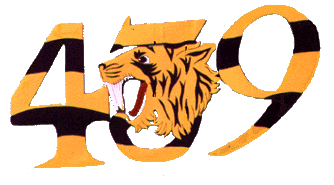|
History
of
 Squadron Squadron
  
Chapter
I
No.
123 Squadron
Army
Co-Operation Training in Canada
January
1942 - November 1943
| Intentionally
left blank
|
On
l5 January 1942, No. 123 (Army
Co-Operation Training) Squadron was formed at Rockcliffe, Ontario, under
the command of S/L V.W.S Ross. The student of service genealogy may trace
the new squadron's ancestry through three or four previous generations. Its
earliest forebear was the School of
Army Co-Operation, which was organized at Camp Borden, Ontario late in
1932. From existing records it has not been possible to determine the exact
date of the School's creation, nor are there any particulars available about
its life prior to 1 January 1936.
In March of that year the School moved from Camp Borden to Trenton,
Ontario, the new station that was beginning to supplant Borden as the RCAF's (Royal Canadian Air
Force) major training centre.
S/L (Squadron
Leader –equivalent to an Army Major) T.A. Lawrence was in command of
the School at this time and he remained as C.O. until 1 July 1938, except
for the short period 27 November 1936 to 6 February 1937 when S/L G.V. Walsh
was in charge
|
Through
these years the School gave a variety of courses to train Army
officers in air-ground co-operation; there was a series of Senior Army
Officers, Air Liaison Officers, and photographic courses, attended by
men many of whom in later years rose to high command in the Army. Armstong Whitworth Atlas aircraft were used at this time to demonstrate the technique
of co-operation.
|

Armstrong
Whitworth "Atlas"
Photo
source: thisisme.ca
|
In
July 1938 S/L Lawrence was transferred to Ottawa, Ontario, to take
command of No. 2 (AC) Squadron,
and S/L W.D. Van Vliet then because O.C.
(Officer Commanding) of the
School. At the end of that year the sketchy unit diary abruptly
terminated and three months later the School as such ceased to exist.
No. 2 (AC) Squadron, which had originally been formed at Trenton in
1935 and moved to Ottawa (Rockcliffe) in 1937, returned to its original
home on 20 March 1939 and on 1 April it assumed the name and position of
what had been the School of Army
Co-Operation.
  
|
|
 Tiger
Squadron
Tiger
Squadron  Tiger
Squadron
Tiger
Squadron